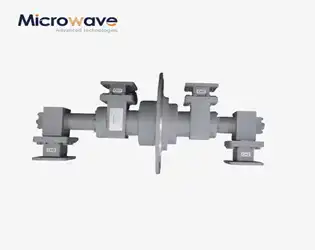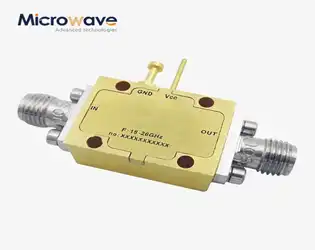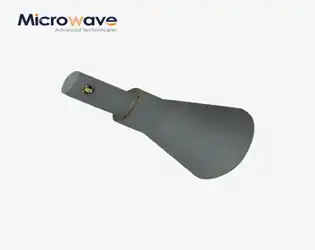BLOG

How to Choose a Dual Channel Coaxial Rotary Joint for Your Radar System?
November 25, 2025
Modern radar systems face mounting challenges in maintaining signal integrity while managing multiple frequency bands simultaneously during continuous 360-degree rotation. Whether you're upgrading air traffic control infrastructure, deploying military surveillance platforms, or optimizing satellite ground stations, selecting the right Dual Channel Coaxial Rotary Joint becomes critical to your system's operational reliability. This comprehensive guide addresses the key technical considerations, performance specifications, and application-specific requirements that engineers and procurement specialists must evaluate when choosing a Dual Channel Coaxial Rotary Joint for demanding radar applications where signal loss, phase stability, and channel isolation directly impact detection accuracy and mission success.
Single Channel Coaxial Rotary Joint – Your Compact Solution for Broadband RF Transmission
November 24, 2025
Are you struggling with signal degradation in rotating radar systems or satellite ground stations? Many engineers face the challenge of maintaining reliable RF transmission while equipment rotates at high speeds. Signal loss, impedance mismatches, and mechanical wear can compromise system performance and lead to costly downtime. The Single Channel Coaxial Rotary Joint addresses these critical pain points by providing seamless, low-loss signal transfer in dynamic rotating environments, ensuring your communication and radar systems operate at peak efficiency without interruption.
The Ultimate Guide to RF Attenuators: Definition, Functions, and Applications
November 24, 2025
In modern RF systems, engineers constantly face a critical challenge: how to precisely control signal strength without compromising system integrity or causing component damage. A coaxial variable attenuator emerges as the solution to this pressing problem, offering adjustable signal attenuation that prevents overload conditions, optimizes impedance matching, and ensures reliable performance across telecommunications, aerospace, and defense applications. This comprehensive guide explores everything you need to know about RF attenuators, from fundamental definitions to real-world implementations, helping you select the right solution for your specific requirements.
How To Make Waveguide Tubes To Better Meet The Requirements Of Radar Level Meter Installations?
November 24, 2025
Industrial facilities face a critical challenge when radar level meters fail to deliver accurate measurements due to turbulent conditions, foam generation, or liquid level fluctuations inside storage tanks. The Waveguide Tube solution addresses this pain point by focusing microwave pulses and reducing signal scattering, ensuring precise level measurement even in the most demanding environments. Making waveguide tubes that truly meet radar level meter installation requirements demands careful attention to material selection, dimensional specifications, and structural design parameters.
How a Voltage Controlled Phase Shifter Can Differentiate Your RF Solution Offering?
November 19, 2025
In today's competitive RF and microwave landscape, engineers constantly face the challenge of achieving precise signal control while managing costs, power consumption, and system complexity. Whether you are designing phased array antennas for satellite communications, developing radar systems for defense applications, or building next-generation 5G infrastructure, the inability to dynamically adjust phase relationships can severely limit your system's performance and market competitiveness. A Voltage Controlled Phase Shifter offers the solution by providing continuous, voltage-tunable phase adjustment that enables superior beam steering, signal alignment, and interference mitigation compared to fixed or digitally stepped alternatives.
What Is an AC Power Amplifier?
November 19, 2025
Imagine this scenario: you have invested in state-of-the-art satellite communication equipment, radar detection systems, or aerospace navigation technology, but your signals are too weak to reach their intended destination. Your communication suffers from degradation, your radar fails to detect critical targets, and your defense systems underperform when precision matters most. This is where an AC Power Amplifier becomes indispensable. An AC Power Amplifier is an electronic device that converts DC power from a power supply into amplified AC voltage signals, significantly boosting the power level of input signals to drive high-demand loads such as antennas, radar systems, and satellite communication equipment. In critical applications spanning telecommunications, aerospace, defense, and beyond, the AC Power Amplifier ensures your signals travel farther, penetrate deeper, and perform reliably even under the most challenging conditions.
Why Use a Waveguide Variable Attenuator?
November 19, 2025
In high-frequency microwave systems where signal integrity is paramount, engineers face a critical challenge: how to precisely control signal amplitude without introducing distortion, phase shifts, or excessive losses. When your satellite communication system demands exact power levels to prevent transponder overload, when your radar installation requires fine-tuned signal strength for optimal target detection, or when your laboratory testing setup needs repeatable attenuation adjustments across multiple frequency bands, the solution lies in implementing a Waveguide Variable Attenuator. These sophisticated components provide the dynamic control necessary to optimize system performance, protect sensitive equipment from power surges, and enable accurate measurements in demanding applications where fixed attenuation simply cannot deliver the flexibility required for mission-critical operations.
November 18, 2025
In today's mission-critical satellite communications, radar surveillance, and aerospace applications, signal degradation due to polarization mismatch can cost organizations thousands in downtime and compromised data integrity. The Ladder Membrane Conical Dual Circular Polarization Horn Antenna addresses this challenge head-on by delivering exceptional dual circular polarization performance that ensures reliable signal reception regardless of environmental complexity. Whether you're upgrading ground station infrastructure or deploying advanced defense surveillance systems, understanding these five critical advantages will help you make an informed procurement decision that maximizes both performance and return on investment.




